Sales Enablement: What Is It And How To Do It Right
Struggling to meet sales targets? Losing deals to competitors?

Sales enablement is your secret weapon to equip your sales team to close more deals and scale your revenue. With the market set to hit $3 billion by 2026, businesses are clearly reaping the benefits. But what exactly is sales enablement, and how can it transform sales performance?
In this article, you’ll learn what sales enablement is and how you can implement it to boost your bottom line.
Sales Enablement Explained In Easy Terms
Sales enablement is a strategy that equips your team with essential tools and knowledge to sell effectively. You can interact with potential customers and boost sales by providing your sales team with the appropriate tools, knowledge, and resources.
Why is it important?
Sales enablement keeps your team sharp in today’s fast market. It transforms hesitant sellers into confident problem-solvers. With the right tools and knowledge, your staff can tackle any client challenge head-on. It’s the difference between fumbling through a pitch and nailing it, directly addressing customer needs.
The concept isn’t complicated. Think of it as a support system for your sales and marketing teams. You’re providing them with:
- Customer insights
- Training and coaching
- Up-to-date product information
- Effective sales tools and technology
Remember, sales enablement is an ongoing process that evolves with your business and market demands. Stay on top of it, and you’ll see the results in your bottom line.
4 Benefits Of Sales Enablement
Are you wondering how sales enablement technology can benefit your business? Consider these 4 benefits and see if they match your goals.
1. Supercharge Your Sales Productivity
Providing your representatives with the needed resources and training, including streamlined sales operations, helps them complete sales more quickly and effectively. This means your team spends less time on administrative duties and more time doing what they do best—selling and making money.
2. Enhance Customer Engagement
With a sales enablement platform, your team can better understand who your customers are, tailor their approach, and deliver real value. Your sales representatives are given a strong tool to interact with prospects and differentiate themselves from the competition.
3. Craft Compelling Sales Content
Creating content that sells doesn’t have to be a headache. With sales enablement, you will create tools that your target audience will love and will assist your sales reps throughout the whole sales process.
4. Maximizing Your ROI Rocket
Sales support maximizes your investments’ value, acting like a financial advisor for your sales team. It transforms costs into revenue-generating tools. Organizations with a sales enablement strategy achieve a 49% higher win rate on forecasted deals while also catalyzing ROI by decreasing onboarding time by 40-50%.
This strategic approach ensures your investments yield the highest possible returns, turning expenses into powerful tools that drive sales and boost efficiency.
How To Implement An Effective Sales Enablement Plan
Implementing an effective sales enablement plan can transform your business strategy only if you execute it right. 92% of organizations report that a dedicated enablement team improved their sales performance. To achieve the same success, follow this step-by-step guide.
Step 1: Map Your Sales Landscape
Take a good look at your current sales setup. Before implementing sales enablement, you need to know what’s working and what’s not. To do this, you need to:
- Map out your entire sales funnel, from lead generation to closing deals.
- Identify the tools and resources your team is currently using, such as CRM software, email automation platforms, and presentation tools.
- Assess current training materials, including onboarding guides and product knowledge resources.
- Speak with your sales reps and get their candid opinions on what drives and blocks their ability to close deals.
For example, you might discover that your team spends too much time on data entry or struggles to explain certain product features. These insights reveal areas needing automation, topics for targeted training, content gaps to fill, resource allocation priorities, and specific improvement goals.
Pro tip:
Look at market trends too. What are the current high-demand offers in your industry? Consider how seasonal products and check for the best items to sell like this summer collection affect product popularity or customer needs.
This approach aligns your efforts with the right demands for specific periods and makes sure your team is prepared for evergreen and seasonal market demands as well.
Step 2: Set Your North Star Goals
Now it’s time to decide where you want to go. Set clear and attainable goals to guide your sales enablement process effectively. This is how to do it correctly:
- Make sure your objectives are SMART: Time-bound, Relevant, Specific, Measurable, and Achievable. For example, “increase our sales team’s conversion rate from 15% to 20% within the next quarter by implementing new sales enablement strategies tailored for that goal.”
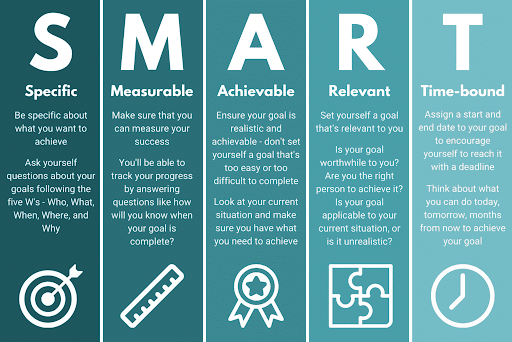
- Make sure they complement your overarching corporate goals. For example, if your goal is increasing market share, equip your sales team with tools and training to target new segments.
- Engage your sales staff in setting these objectives to boost their motivation. For example, they could be involved in goal-setting workshops to define targets, such as increasing lead conversion rates by 10%.
Step 3: Assemble Your A-Team
Don’t attempt to complete this task by yourself. Here’s how to put together a group that will support your efforts:
- Get representatives from product, marketing, and sales on board for a comprehensive strategy.
- Look for enthusiastic and experience-hungry team members who are motivated to learn and improve sales procedures. Post on intern hiring platforms to find fresh graduates keen on gaining experience in sales operations.
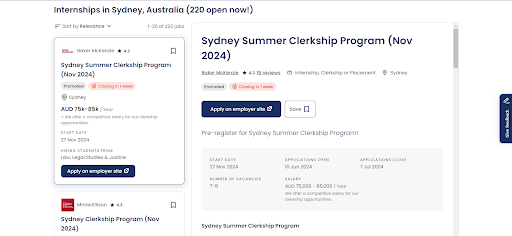
- Choose a motivating leader who can communicate effectively at all levels.
- Hire candidates with creative approaches or unique perspectives for roles using vetting-intensive sourcing platforms like Genius to bring in proven expertise to the team.
- Look for individuals with various abilities, including content creators, data analysts, and skilled communicators.
For example, pair a seasoned sales manager with a marketing tech-savvy intern to create a powerhouse partnership.
The manager brings experience and customer insight, the marketer adds creative flair and market know-how, and the intern brings fresh tech skills and innovative ideas. Together, they craft a winning sales strategy!
Step 4: Spot The Gaps
This isn’t about pointing fingers - it’s about identifying opportunities for improvement. You should:
- Compare your current processes to industry best practices.
- Analyze your sales data. Review pipeline stages, conversion rates, and deal durations. Interpret trends to pinpoint bottlenecks and adjust sales processes or provide targeted training for improvement.
- Listen to customer feedback. Are there common complaints or questions? Use it to refine your products or services and enhance customer experience.
For example, you might find that your team struggles with objection handling or that your product demos aren’t as effective as they could be. Address these gaps in your plan.
Step 5: Design Your Game Plan
With all the necessary information gathered, it’s time to craft a strategy tailored to your team’s needs. Follow these steps to create an effective plan:
- Determine which gaps, if addressed, would significantly impact your team’s performance. For example, improving lead qualification could streamline sales efforts and increase conversion rates effectively.
- For each priority, define clear, measurable objectives. For example, sales closing rates can be increased by 15% within 6 months.
- List the steps needed to achieve each objective, such as conducting tailored sales training sessions, implementing role-playing exercises, and providing ongoing coaching and feedback.
Your game plan could include actions like “Develop a comprehensive product training program” or “Implement a new lead scoring system.” Make sure you cover all the details to make implementation smooth and effective.
Step 6: Build a Sales Playbook
Consider your sales playbook to be your team’s trusted recipe book, offering proven methods for success. High-performing sales organizations depend on their sales playbook to seamlessly guide their activities.

Here’s what you should include:
- A thorough explanation of your sales process, including all necessary steps and stages.
- Templates for standard sales papers, such as follow-up emails and bids.
- Scripts when responding to typical queries and concerns.
- Representatives can showcase their worth using case studies and success stories, highlighting their impact.
Make sure updating and using your playbook is simple. It needs to be an ongoing document that changes as your company expands.
Step 7: Create Engaging Training Adventures
Learning doesn’t have to be boring. Think of innovative techniques for your training sessions to keep participants engaged and make them more motivated to be productive. This is how to get it to work:
- Use a variety of forms: role-playing, videos, tests, and hands-on tasks.
- Divide difficult subjects into digestible, bite-sized pieces. Start with basic product features before diving into advanced technical details.
- Add gamification components: badges or points to make learning engaging and competitive.
- Use of actual situations: handling common objections from customers during sales calls, for practical skill development.
For example, you may set up an “objection handling challenge” where representatives vie to manage the most objections from customers appropriately in a predetermined amount of time.
Pro Tip:
To guarantee ongoing interest and progress, ask participants for feedback weekly and modify your training sessions accordingly.
Step 8: Equip With Powerful Tools
The ‘right tool’ isn’t the same for everyone but choosing a comprehensive tool integrates your efforts so it’s easier to manage.
- CrankWheel Screen Sharing: Use this for team collaboration. Whether you’re reviewing a proposal or strategizing for a big pitch, real-time screen sharing keeps everyone on the same page.
- CrankWheel Monitor Engagement: It shows in real-time how your viewer engages with your material.
- CrankWheel Lead Capture: This tool captures and qualifies incoming leads. By using lead capture, you can respond promptly to your customers, which translates into more sales opportunities.
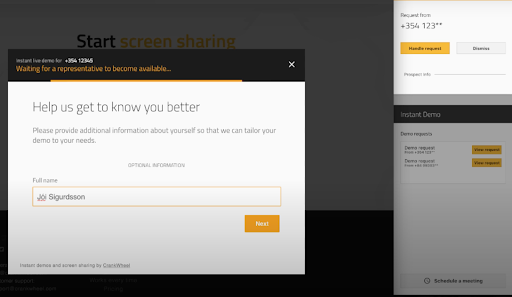
Remember, the goal is to make your team’s life easier, not more complicated. Select user-friendly tools that work well with your existing systems.
Step 9: Launch With A Bang
This gets your team committed, achieve early wins, and build a solid base for ongoing sales success. Here’s how to kick things off:
- Plan a Kick-Off Event. Organize a particular sales team meeting or company-wide gathering to energize everyone and align goals for a successful start to your sales enablement strategy.
- Communicate the Benefits. Describe how the new strategy will simplify our team’s tasks and boost sales, making everyone’s work smoother and more rewarding.
- Make It Fun. Include interactive demonstrations, prizes, or even a celebratory party.
The goal is to create excitement and get everyone on board from day one.
Step 10: Track, Learn, & Improve
Your sales enablement journey doesn’t end at implementation. Continue to optimize as you gather more data to keep your team competitive, adapt to market changes, and consistently hit targets.
Do these make sure your sales enablement strategy stays on course:
- Use real-time analytics tools like Salesforce Analytics to create customized dashboards to track key metrics.

- Ask your sales staff for feedback monthly. They are at the forefront and will offer priceless insights into what is and is not working.
- Keep a quality control system or workflow so you can monitor and improve your sales processes. For example, when selling physical products, use a statistical process control solution to make sure you only manufacture products that live up to your set standards.
- Focus on crucial KPIs. Use your HubSpot or Salesforce to conversion rates, average deal size, and sales cycle length.
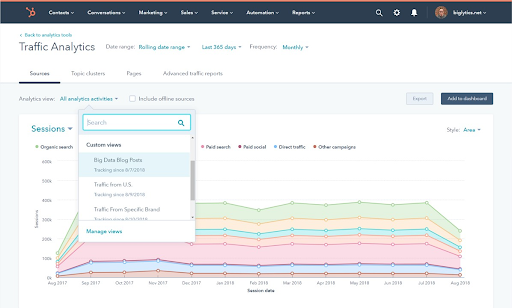
- Act on the data. Use it to identify gaps, prioritize resources, improve processes, and focus training on why you identify to be performing poorly.
- Implement A/B tests using tools like Optimizely to test one variable at a time, analyze results, and refine strategies based on what works best.

Remember, the goal is continuous improvement. Track, learn, and adjust to keep your sales enablement strategy fresh and effective, driving better results over time.
2 Real-Life Sales Enablement Examples
As you read, consider: How might these tactics apply to my organization? What challenges could arise? What unique elements could I incorporate?
1. Slack’s Collaborative Approach to Sales Enablement
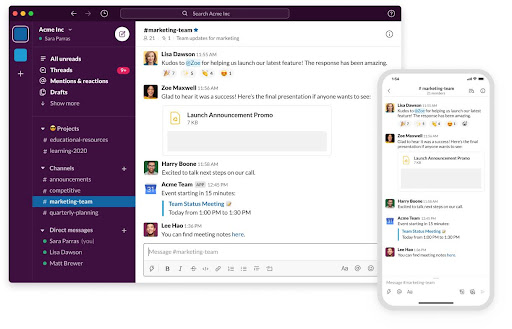
Slack integrated its platform to link sales, marketing, and product teams to improve sales and sign their marketing efforts better. This allowed for quick information sharing and kept everyone updated on the latest product details and marketing campaigns.
As teams communicated better, their productivity increased by 25%. Slack generated better quality leads, more successful sales engagements, and made sure that sales materials and messaging were consistent and effective.
Takeaway:
Use a shared communication tool to keep your sales team connected with other departments. This will help everyone work together smoothly, make decisions faster, and achieve better overall results.
2. HubSpot’s Content-Driven Approach To Sales Enablement
HubSpot’s goal was to create a smooth customer experience by getting their marketing and sales teams to work closely together.
They implemented sales enablement in 2 main ways:
First, they created action-oriented content like blog posts, ebooks, and webinars. This content not only educates potential customers but also equips the sales team with valuable tools to engage with leads better.
Second, they invested in training their sales reps. They made sure everyone knew the products well, understood sales techniques, and knew who their target customers were.
Their effective sales enablement efforts paid off. As of March 2024, HubSpot had 216,840 paying customers.
Takeaway:
Start creating useful content that teaches your customers and provides your sales team with effective tools to engage leads. Make sure to thoroughly train your sales team to understand your products, how to sell them, and identify who your customers are.
4 Sales Enablement Challenges & Solutions
Implementing an effective sales enablement plan comes with its challenges. Ask yourself how you can overcome these obstacles and strategize based on what you learn here.
I. Misaligned Content & Real-World Sales Scenarios
Content creators often develop materials based on assumptions rather than actual field experiences.
To bridge this gap, implement a robust feedback system where sales reps report monthly on customer objections, pain points, and successful pitch elements. This real-time intelligence allows you to develop highly targeted materials that directly address customer concerns and highlight effective selling points.
Use a shared platform or set up regular debriefing sessions where the information gathered is shared. This matches your content with real-world scenarios to equip your sales team with more relevant and impactful resources.
II. Difficulty Measuring Sales Enablement Impact On Revenue
During the sales cycle, develop a detailed model that connects your enablement efforts to completed sales and revenue.
Use data from custom KPIs, CRMs, learning management systems, and content engagement metrics to identify trends then adjust your strategies based on what you find effective.
Linking your enablement activities to financial results, you can fine-tune your methods and use your resources more wisely.
III. Ineffective Digital Sales Portals Hindering Rep Productivity
Many sales enablement portals have poor user experience and confusing design, making it hard for your team to find resources or worse, avoid the platform altogether.
To address this challenge, invest in user-centric design principles for your sales enablement portal, potentially partnering with a trusted platform design agency.
Conduct usability tests with your sales staff to uncover pain points and preferences. Design a clear navigation structure, and strong search features with filters, and offer tailored content suggestions based on job roles, regions, or current transactions.
IV. Resistance from Seasoned Sales Reps to New Technologies
Experienced sales professionals may hesitate to adopt new tools and processes, which could slow down your enablement efforts.
To overcome this, create a mentorship program that pairs tech-savvy junior reps with seasoned veterans. This encourages younger reps to share digital skills and learn from veterans’ sales experience. Reps should also be involved in choosing tools to leverage their industry experience and to make them feel like they are part of the process.
Conclusion
As you implement the strategies here, ask yourself: What is one specific area in your sales process where you could implement a sales enablement strategy right now?
CrankWheel can help. We offer innovative sales-driven solutions to help you connect with clients more smoothly and close deals faster. See what CrankWheel can do for your business today.
About the author
Burkhard Berger is the founder of Novum™. He helps innovative B2B companies implement modern SEO strategies to scale their organic traffic to 1,000,000+ visitors per month. Curious about what your true traffic potential is?
